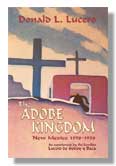 THE ADOBE KINGDOM
THE ADOBE KINGDOMNew Mexico 1598 - 1958 as Experienced by the Families Lucero de Godoy y Baca
By Donald L. Lucero
"Superbly researched and written, the true history of two New Mexico families through four centuries." --Michael L. Olsen, Ph.D.
Professor of History, New Mexico Highlands University Order from Sunstone: (505) 988-4418 The Adobe Kingdom is one of those rare things: the true story of two families across twelve generations. They came to New Mexico seeking a new homeland, not to initiate a new society but to transplant an old one. What they found, as they lived their lives in what they came to believe was one of the most beautiful places on earth, was a forbidding land, both hostile and nurturing, and not unlike the land they had left behind. Their daily contact with its remarkable landscape assured that they would remain a pastoral people centered on their herds and flocks and, at once, one with the land. Culturally isolated and little disturbed by outside influences for over two and one-half centuries, they retained their way of life.
Yearning for his roots and for a return to the land of his birth, Donald Lucero follows two families across twelve generations, from their entry into New Mexico at La Toma del Rio del Norte, in 1598, to their achievement of statehood in 1912 and beyond. This account of their journey, littered with both joys and sorrows, invites the reader to share in the New Mexico experience.
Lucero is a former resident of Las Vegas, New Mexico, where he was born in his father's home, formerly the home of his paternal grandfather. He was educated in the Las Vegas schools through college, where in 1958 he received his B. A. in history from New Mexico Highlands University. After service with the U. S. Army, he served a two-year commitment with the U. S. Peace Corps in Colombia, South America. He then returned to New Mexico on a Peace Corps Preferential Fellowship to pursue graduate work in Counseling at the University of New Mexico. He received his M.A. in Counseling from this institution in 1965 and returned to complete his doctorate in Counseling Psychology in 1970.
Since completion of a post-doctoral fellowship in Community Psychiatry and a second master's degree in Mental Health Administration at the University of North Carolina Medical School and School of Public Health, he has held several clinical and administrative positions in mental health. Dr. Lucero, a licensed psychologist, conducts a private practice in psychology in Raynham Massachusetts. He is also the author of A Nation of Shepherds and The Rosas Affair, both from Sunstone Press. Sample Chapter
Softcover:
eBook:
Secure Movie & TV Rights
Website: http://books.google.com/books?id=xBm7ZGkXQJkC&dq=9780865346697&source=gbs_navlinks_s
Hardcover:
ISBN: 978-1-63293-337-9
384 pp.,$34.95
6 X 9
ISBN: 978-0-86534-669-7
384 pp.,$26.95
ISBN: 978-1-61139-153-4
384 pp.,$4.99
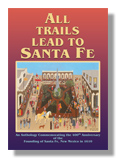 ALL TRAILS LEAD TO SANTA FE
ALL TRAILS LEAD TO SANTA FE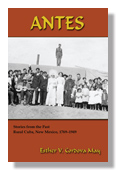 ANTES
ANTES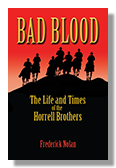 BAD BLOOD
BAD BLOOD THE BIG NEW MEXICO ACTIVITY BOOK
THE BIG NEW MEXICO ACTIVITY BOOK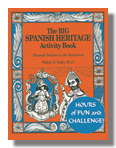 THE BIG SPANISH HERITAGE ACTIVITY BOOK
THE BIG SPANISH HERITAGE ACTIVITY BOOK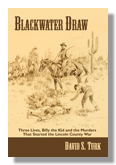 BLACKWATER DRAW
BLACKWATER DRAW BREAKDOWN
BREAKDOWN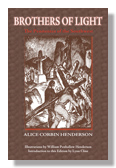 BROTHERS OF LIGHT
BROTHERS OF LIGHT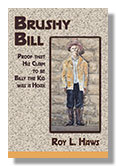 BRUSHY BILL
BRUSHY BILL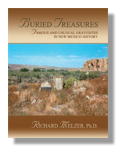 BURIED TREASURES
BURIED TREASURES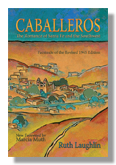 CABALLEROS
CABALLEROS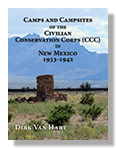 CAMPS AND CAMPSITES OF THE CIVILIAN CONSERVATION CORPS (CCC) IN NEW MEXICO 1933–1942
CAMPS AND CAMPSITES OF THE CIVILIAN CONSERVATION CORPS (CCC) IN NEW MEXICO 1933–1942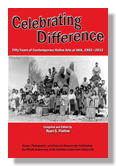 CELEBRATING DIFFERENCE
CELEBRATING DIFFERENCE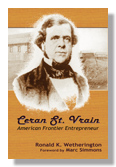 CERAN ST. VRAIN
CERAN ST. VRAIN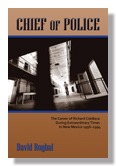 CHIEF OF POLICE
CHIEF OF POLICE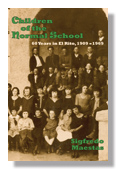 CHILDREN OF THE NORMAL SCHOOL
CHILDREN OF THE NORMAL SCHOOL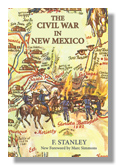 THE CIVIL WAR IN NEW MEXICO
THE CIVIL WAR IN NEW MEXICO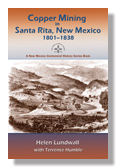 COPPER MINING IN SANTA RITA, NEW MEXICO, 1801-1838
COPPER MINING IN SANTA RITA, NEW MEXICO, 1801-1838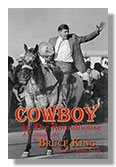 COWBOY IN THE ROUNDHOUSE
COWBOY IN THE ROUNDHOUSE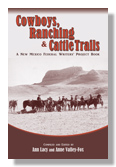 COWBOYS, RANCHING & CATTLE TRAILS
COWBOYS, RANCHING & CATTLE TRAILS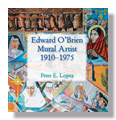 EDWARD O'BRIEN, MURAL ARTIST, 1910–1975
EDWARD O'BRIEN, MURAL ARTIST, 1910–1975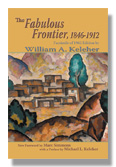 THE FABULOUS FRONTIER, 1846-1912
THE FABULOUS FRONTIER, 1846-1912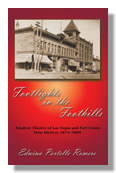 FOOTLIGHTS IN THE FOOTHILLS
FOOTLIGHTS IN THE FOOTHILLS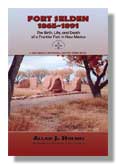 FORT SELDEN, 1865-1891
FORT SELDEN, 1865-1891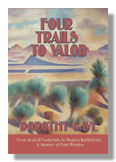 FOUR TRAILS TO VALOR
FOUR TRAILS TO VALOR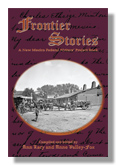 FRONTIER STORIES
FRONTIER STORIES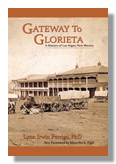 GATEWAY TO GLORIETA
GATEWAY TO GLORIETA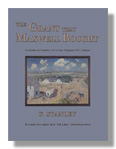 THE GRANT THAT MAXWELL BOUGHT
THE GRANT THAT MAXWELL BOUGHT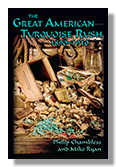 THE GREAT AMERICAN TURQUOISE RUSH: 1890–1910
THE GREAT AMERICAN TURQUOISE RUSH: 1890–1910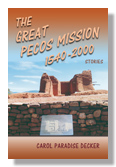 THE GREAT PECOS MISSION, 1540-2000
THE GREAT PECOS MISSION, 1540-2000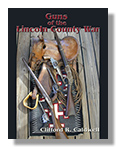 GUNS OF THE LINCOLN COUNTY WAR
GUNS OF THE LINCOLN COUNTY WAR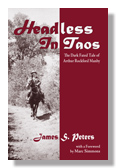 HEADLESS IN TAOS
HEADLESS IN TAOS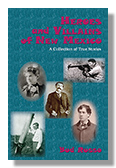 HEROES AND VILLAINS OF NEW MEXICO
HEROES AND VILLAINS OF NEW MEXICO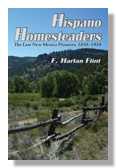 HISPANO HOMESTEADERS
HISPANO HOMESTEADERS HISTORIC CATHOLIC CHURCHES ALONG THE RIO GRANDE IN NEW MEXICO
HISTORIC CATHOLIC CHURCHES ALONG THE RIO GRANDE IN NEW MEXICO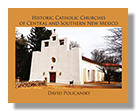 HISTORIC CATHOLIC CHURCHES OF CENTRAL AND SOUTHERN NEW MEXICO
HISTORIC CATHOLIC CHURCHES OF CENTRAL AND SOUTHERN NEW MEXICO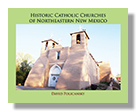 HISTORIC CATHOLIC CHURCHES OF NORTHEASTERN NEW MEXICO
HISTORIC CATHOLIC CHURCHES OF NORTHEASTERN NEW MEXICO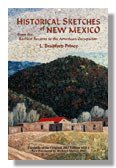 HISTORICAL SKETCHES OF NEW MEXICO
HISTORICAL SKETCHES OF NEW MEXICO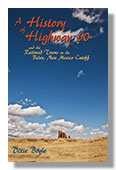 A HISTORY OF HIGHWAY 60 AND THE RAILROAD TOWNS ON THE BELEN, NEW MEXICO CUTOFF
A HISTORY OF HIGHWAY 60 AND THE RAILROAD TOWNS ON THE BELEN, NEW MEXICO CUTOFF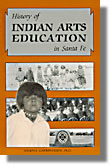 HISTORY OF INDIAN ARTS EDUCATION IN SANTA FE, 1890-1962
HISTORY OF INDIAN ARTS EDUCATION IN SANTA FE, 1890-1962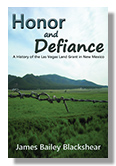 HONOR AND DEFIANCE
HONOR AND DEFIANCE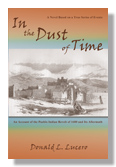 IN THE DUST OF TIME
IN THE DUST OF TIME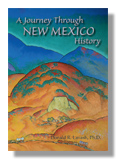 A JOURNEY THROUGH NEW MEXICO HISTORY
A JOURNEY THROUGH NEW MEXICO HISTORY JUAN DE ONATE'S COLONY IN THE WILDERNESS
JUAN DE ONATE'S COLONY IN THE WILDERNESS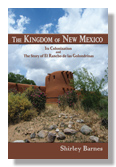 THE KINGDOM OF NEW MEXICO
THE KINGDOM OF NEW MEXICO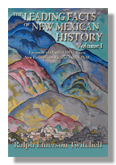 THE LEADING FACTS OF NEW MEXICAN HISTORY, VOL I
THE LEADING FACTS OF NEW MEXICAN HISTORY, VOL I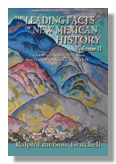 THE LEADING FACTS OF NEW MEXICAN HISTORY, VOL. II
THE LEADING FACTS OF NEW MEXICAN HISTORY, VOL. II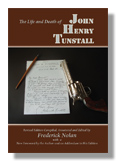 THE LIFE AND DEATH OF JOHN HENRY TUNSTALL
THE LIFE AND DEATH OF JOHN HENRY TUNSTALL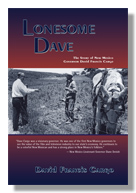 LONESOME DAVE
LONESOME DAVE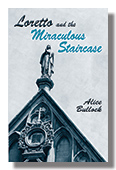 LORETTO AND THE MIRACULOUS STAIRCASE
LORETTO AND THE MIRACULOUS STAIRCASE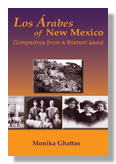 LOS ÁRABES OF NEW MEXICO
LOS ÁRABES OF NEW MEXICO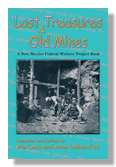 LOST TREASURES & OLD MINES
LOST TREASURES & OLD MINES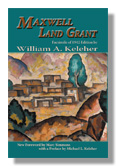 MAXWELL LAND GRANT
MAXWELL LAND GRANT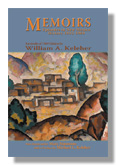 MEMOIRS
MEMOIRS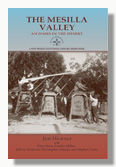 THE MESILLA VALLEY
THE MESILLA VALLEY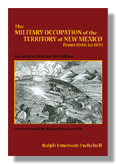 THE MILITARY OCCUPATION OF THE TERRITORY OF NEW MEXICO, 1846-1851
THE MILITARY OCCUPATION OF THE TERRITORY OF NEW MEXICO, 1846-1851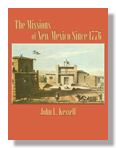 THE MISSIONS OF NEW MEXICO Since 1776
THE MISSIONS OF NEW MEXICO Since 1776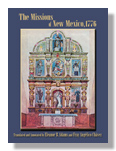 THE MISSIONS OF NEW MEXICO, 1776
THE MISSIONS OF NEW MEXICO, 1776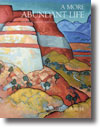 A MORE ABUNDANT LIFE
A MORE ABUNDANT LIFE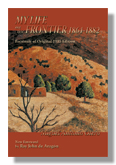 MY LIFE ON THE FRONTIER, 1864-1882
MY LIFE ON THE FRONTIER, 1864-1882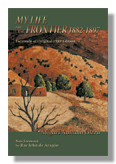 MY LIFE ON THE FRONTIER, 1882-1897
MY LIFE ON THE FRONTIER, 1882-1897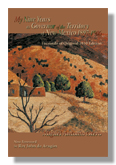 MY NINE YEARS AS GOVERNOR OF THE TERRITORY OF NEW MEXICO, 1897-1906
MY NINE YEARS AS GOVERNOR OF THE TERRITORY OF NEW MEXICO, 1897-1906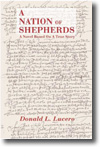 A NATION OF SHEPHERDS
A NATION OF SHEPHERDS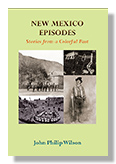 NEW MEXICO EPISODES
NEW MEXICO EPISODES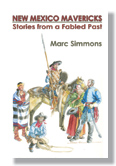 NEW MEXICO MAVERICKS
NEW MEXICO MAVERICKS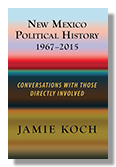 NEW MEXICO POLITICAL HISTORY, 1967–2015
NEW MEXICO POLITICAL HISTORY, 1967–2015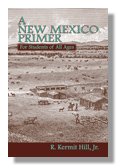 A NEW MEXICO PRIMER FOR STUDENTS OF ALL AGES
A NEW MEXICO PRIMER FOR STUDENTS OF ALL AGES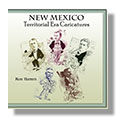 NEW MEXICO TERRITORIAL ERA CARICATURES
NEW MEXICO TERRITORIAL ERA CARICATURES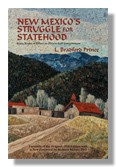 NEW MEXICO'S STRUGGLE FOR STATEHOOD
NEW MEXICO'S STRUGGLE FOR STATEHOOD NINA OTERO-WARREN OF SANTA FE
NINA OTERO-WARREN OF SANTA FE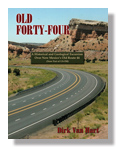 OLD FORTY-FOUR
OLD FORTY-FOUR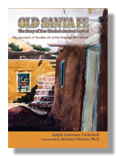 OLD SANTA FE
OLD SANTA FE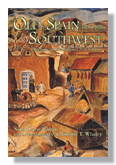 OLD SPAIN IN OUR SOUTHWEST
OLD SPAIN IN OUR SOUTHWEST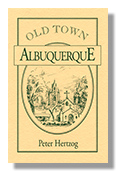 OLD TOWN ALBUQUERQUE
OLD TOWN ALBUQUERQUE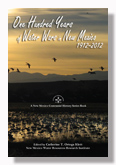 ONE HUNDRED YEARS OF WATER WARS IN NEW MEXICO, 1912-2012
ONE HUNDRED YEARS OF WATER WARS IN NEW MEXICO, 1912-2012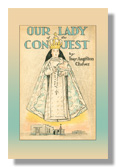 OUR LADY OF THE CONQUEST
OUR LADY OF THE CONQUEST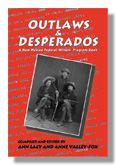 OUTLAWS & DESPERADOS
OUTLAWS & DESPERADOS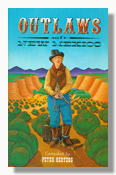 OUTLAWS OF NEW MEXICO
OUTLAWS OF NEW MEXICO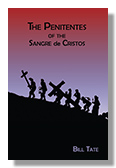 THE PENITENTES OF THE SANGRE DE CRISTOS
THE PENITENTES OF THE SANGRE DE CRISTOS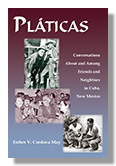 PLÁTICAS
PLÁTICAS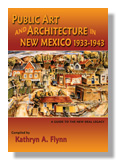 PUBLIC ART AND ARCHITECTURE IN NEW MEXICO, 1933-1943
PUBLIC ART AND ARCHITECTURE IN NEW MEXICO, 1933-1943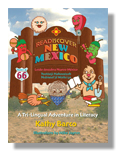 READiscover NEW MEXICO
READiscover NEW MEXICO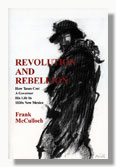 REVOLUTION AND REBELLION
REVOLUTION AND REBELLION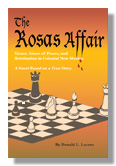 THE ROSAS AFFAIR
THE ROSAS AFFAIR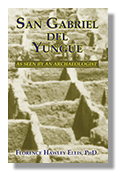 SAN GABRIEL DEL YUNGUE
SAN GABRIEL DEL YUNGUE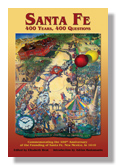 SANTA FE, 400 YEARS, 400 QUESTIONS
SANTA FE, 400 YEARS, 400 QUESTIONS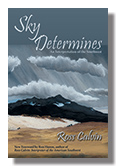 SKY DETERMINES
SKY DETERMINES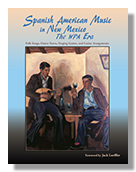 SPANISH AMERICAN MUSIC IN NEW MEXICO, THE WPA ERA
SPANISH AMERICAN MUSIC IN NEW MEXICO, THE WPA ERA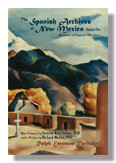 THE SPANISH ARCHIVES OF NEW MEXICO, VOLUME ONE
THE SPANISH ARCHIVES OF NEW MEXICO, VOLUME ONE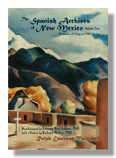 THE SPANISH ARCHIVES OF NEW MEXICO, VOLUME TWO
THE SPANISH ARCHIVES OF NEW MEXICO, VOLUME TWO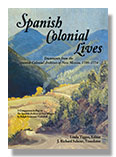 SPANISH COLONIAL LIVES
SPANISH COLONIAL LIVES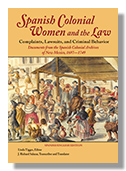 SPANISH COLONIAL WOMEN AND THE LAW: COMPLAINTS, LAWSUITS, AND CRIMINAL BEHAVIOR
SPANISH COLONIAL WOMEN AND THE LAW: COMPLAINTS, LAWSUITS, AND CRIMINAL BEHAVIOR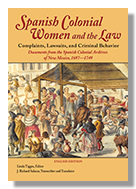 SPANISH COLONIAL WOMEN AND THE LAW: COMPLAINTS, LAWSUITS, AND CRIMINAL BEHAVIOR (ENGLISH EDITION)
SPANISH COLONIAL WOMEN AND THE LAW: COMPLAINTS, LAWSUITS, AND CRIMINAL BEHAVIOR (ENGLISH EDITION)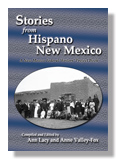 STORIES FROM HISPANO NEW MEXICO
STORIES FROM HISPANO NEW MEXICO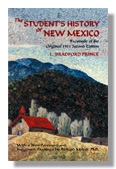 THE STUDENT'S HISTORY OF NEW MEXICO
THE STUDENT'S HISTORY OF NEW MEXICO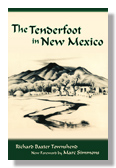 THE TENDERFOOT IN NEW MEXICO
THE TENDERFOOT IN NEW MEXICO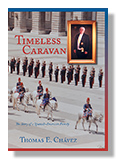 TIMELESS CARAVAN
TIMELESS CARAVAN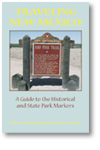 TRAVELING NEW MEXICO
TRAVELING NEW MEXICO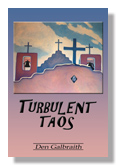 TURBULENT TAOS
TURBULENT TAOS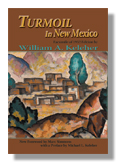 TURMOIL IN NEW MEXICO, 1846-1868
TURMOIL IN NEW MEXICO, 1846-1868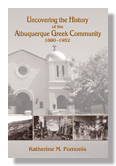 UNCOVERING THE HISTORY OF THE ALBUQUERQUE GREEK COMMUNITY, 1880–1952
UNCOVERING THE HISTORY OF THE ALBUQUERQUE GREEK COMMUNITY, 1880–1952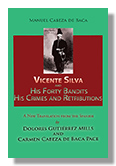 VICENTE SILVA AND HIS FORTY BANDITS, HIS CRIMES AND RETRIBUTIONS
VICENTE SILVA AND HIS FORTY BANDITS, HIS CRIMES AND RETRIBUTIONS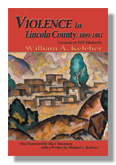 VIOLENCE IN LINCOLN COUNTY, 1869-1881
VIOLENCE IN LINCOLN COUNTY, 1869-1881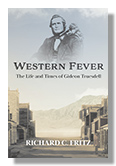 WESTERN FEVER
WESTERN FEVER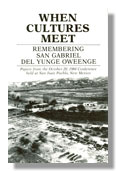 WHEN CULTURES MEET
WHEN CULTURES MEET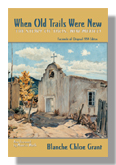 WHEN OLD TRAILS WERE NEW
WHEN OLD TRAILS WERE NEW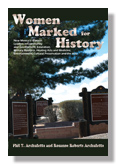 WOMEN MARKED FOR HISTORY
WOMEN MARKED FOR HISTORY